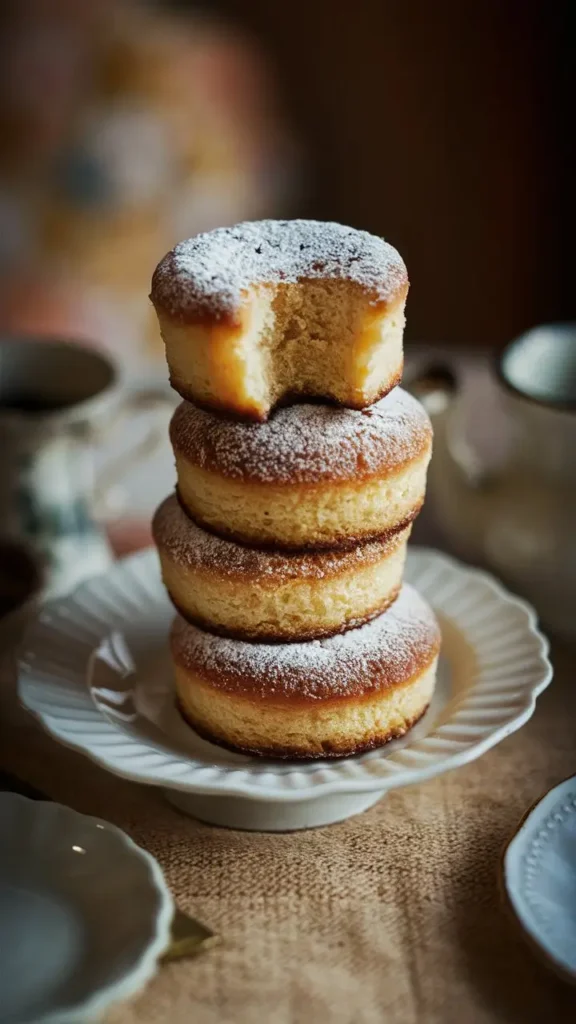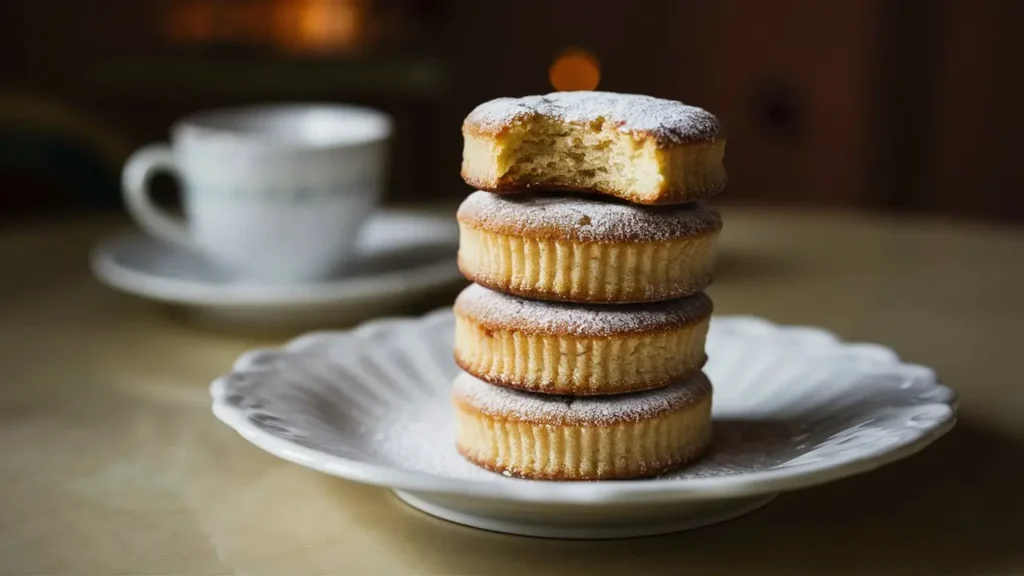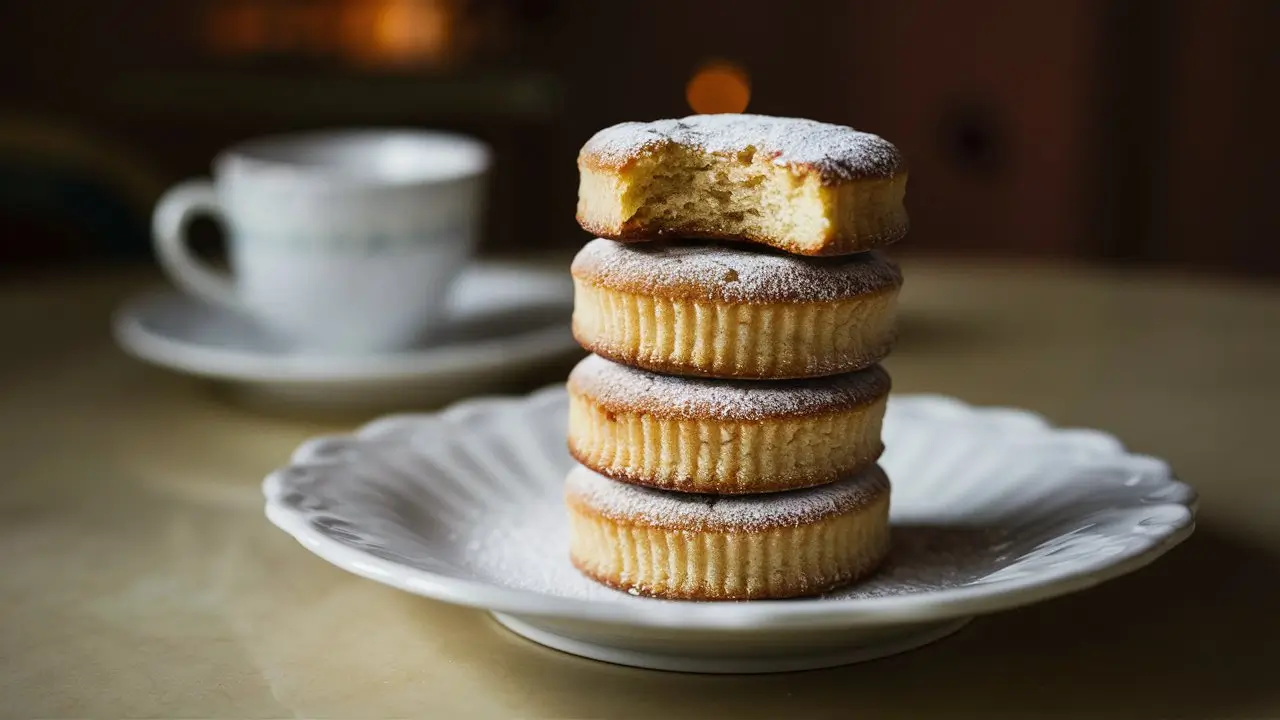Old-fashioned tea cakes recipe are a timeless Southern tradition—a cross between a soft sugar cookie and a simple cake, rich with buttery flavor and nostalgia. Often found in grandmothers’ recipe boxes, these humble delights have graced family gatherings, church socials, and Sunday suppers for generations.
Simple to make, endlessly comforting, and perfect with a cup of tea, these tea cakes are more than a dessert—they’re a piece of cherished history.
Why You Will Love This Recipe
-
Traditional Southern Comfort – These tea cakes bring old-school flavor and charm to your kitchen.
-
Soft, Buttery Texture – Each bite is tender, chewy, and melts in your mouth.
-
Easy to Make with Pantry Staples – No unusual ingredients needed.
-
Perfect Canvas for Variations – Add spices, lemon zest, or glaze to make it your own.
Ingredients List
Basic Tea Cake Dough
-
1 cup (2 sticks) unsalted butter, softened
-
1 ¾ cups granulated sugar
-
2 large eggs
-
1 tablespoon vanilla extract
-
½ teaspoon baking soda
-
½ teaspoon salt
-
½ teaspoon ground nutmeg (optional, but traditional)
-
3 ½ cups all-purpose flour
-
2 tablespoons buttermilk (or regular milk)
Optional Add-ins and Toppings
-
Powdered sugar (for dusting)
-
Cinnamon-sugar mix (for topping)
-
Lemon zest or almond extract (for flavor variations)
Timing & Servings
-
Prep Time: 20 minutes
-
Chill Time: 1 hour
-
Bake Time: 10–12 minutes per batch
-
Total Time: 1 hour 40 minutes
-
Servings: Makes about 36–40 tea cakes
Step-by-Step Instructions for Old-Fashioned Tea Cakes Recipe
Step 1: Cream the Butter and Sugar
In a large mixing bowl, cream together softened butter and sugar using a hand mixer or stand mixer. Beat until light, fluffy, and pale in color—about 3–4 minutes.
Step 2: Add Eggs and Vanilla
Add the eggs one at a time, mixing well after each addition. Stir in the vanilla extract and optional nutmeg if using. This is where that old-fashioned aroma starts to develop.
Step 3: Combine Dry Ingredients
In a separate bowl, whisk together the flour, salt, and baking soda. Gradually add the dry mixture to the wet ingredients, mixing just until combined. Do not overmix.
Step 4: Add Buttermilk
Mix in the buttermilk to create a soft dough. The buttermilk gives the dough slight tang and tenderness, which is key to authentic tea cakes.
Step 5: Chill the Dough
Form the dough into a disc, wrap in plastic wrap, and refrigerate for at least 1 hour. Chilling ensures the cookies hold their shape while baking.
Step 6: Shape and Bake
Preheat your oven to 350°F (175°C). Roll out the chilled dough on a lightly floured surface to about ¼ inch thick. Cut into circles using a biscuit cutter or glass.
Place on a baking sheet lined with parchment paper and bake for 10–12 minutes, or until the edges are just turning golden.
Step 7: Cool and Serve
Let tea cakes cool on the baking sheet for 5 minutes before transferring to a wire rack. Serve plain or dust with powdered sugar.

History and Cultural Roots
Old-fashioned tea cakes have deep roots in Southern U.S. culinary history, particularly among African American families. Originally made with simple ingredients during times when luxury foods were scarce, tea cakes symbolized celebration and love.
These cookies were often made during holidays and family gatherings. Many variations were passed down orally, with each family developing its own twist—some with molasses, others with lemon zest, or even brown sugar.
Tips for the Best Tea Cakes
Use Real Butter
Butter is the base of flavor. Don’t substitute with margarine if you want that rich, authentic taste.
Don’t Overmix the Dough
Overmixing can toughen your tea cakes. Mix just until the flour disappears.
Chill for Better Shape
Chilling prevents the cookies from spreading too much and helps them stay thick and soft.
Don’t Overbake
Pull them from the oven when just lightly golden. They will continue baking on the sheet and stay soft once cooled.
Flavor Variations
Lemon Tea Cakes
Add 1 tablespoon of lemon zest and replace vanilla with lemon extract. Perfect for spring and summer tea parties.
Almond Tea Cakes
Substitute half of the vanilla extract with almond extract. Dust with powdered sugar for an elegant finish.
Brown Sugar Tea Cakes
Use half granulated sugar and half light brown sugar for a deeper, caramel-like flavor.
Spiced Tea Cakes
Add ½ teaspoon of cinnamon or allspice to the dough for a cozy, holiday feel.
Glazes and Toppings
Simple Sugar Glaze
-
1 cup powdered sugar
-
1–2 tablespoons milk
-
½ teaspoon vanilla extract
Mix until smooth and drizzle over cooled tea cakes for a sweet finish.
Classic Cinnamon Sugar
Mix 2 tablespoons sugar with 1 teaspoon cinnamon. Sprinkle over tea cakes just before baking.
Serving Suggestions
-
Serve with hot tea, coffee, or sweet iced tea.
-
Pair with fresh berries or fruit preserves.
-
Add them to a dessert platter alongside shortbread and lemon bars.
-
Include in gift tins for holidays or birthdays.
Storage and Make-Ahead Tips
Storing
-
Store tea cakes in an airtight container at room temperature for up to 5 days.
-
Place parchment between layers to prevent sticking.
Freezing
-
Freeze unbaked dough rounds or baked tea cakes for up to 2 months.
-
Thaw at room temperature and enjoy.
Make-Ahead
-
Dough can be made 1–2 days in advance and kept refrigerated.
-
Great for prepping ahead of holiday baking marathons.
Nutritional Overview (Per Tea Cake)
Estimated for 1 tea cake (without glaze):
-
Calories: 120
-
Fat: 6g
-
Carbs: 15g
-
Sugar: 7g
-
Protein: 1g
-
Fiber: 0.3g
You can make them smaller or larger depending on your preference and adjust nutritional values accordingly.
FAQs
Are tea cakes the same as British tea cakes?
No, British tea cakes are more like sweet yeast buns often with dried fruit, while Southern tea cakes are cookie-like and buttery.
Can I skip the buttermilk?
Yes, buttermilk adds tenderness and a subtle tang. If unavailable, use regular milk with ½ teaspoon of vinegar or lemon juice.
Can I decorate them?
Absolutely! You can add colored sugar, drizzle glaze, or use cookie cutters for festive shapes.
Can I make these gluten-free?
Use a 1:1 gluten-free flour blend. The texture may vary slightly but should still be delicious.
Conclusion
Old-fashioned tea cakes are the embodiment of simple Southern joy—soft, buttery, and rich with tradition. Whether you enjoy them plain, glazed, or with a hint of lemon, these tea cakes are guaranteed to warm your kitchen and your heart.
Perfect for sharing or savoring solo, this classic recipe proves that sometimes the most basic ingredients create the most meaningful treats. Whether passed down from a grandmother’s recipe box or newly discovered in your baking journey, these tea cakes are bound to become a favorite.
